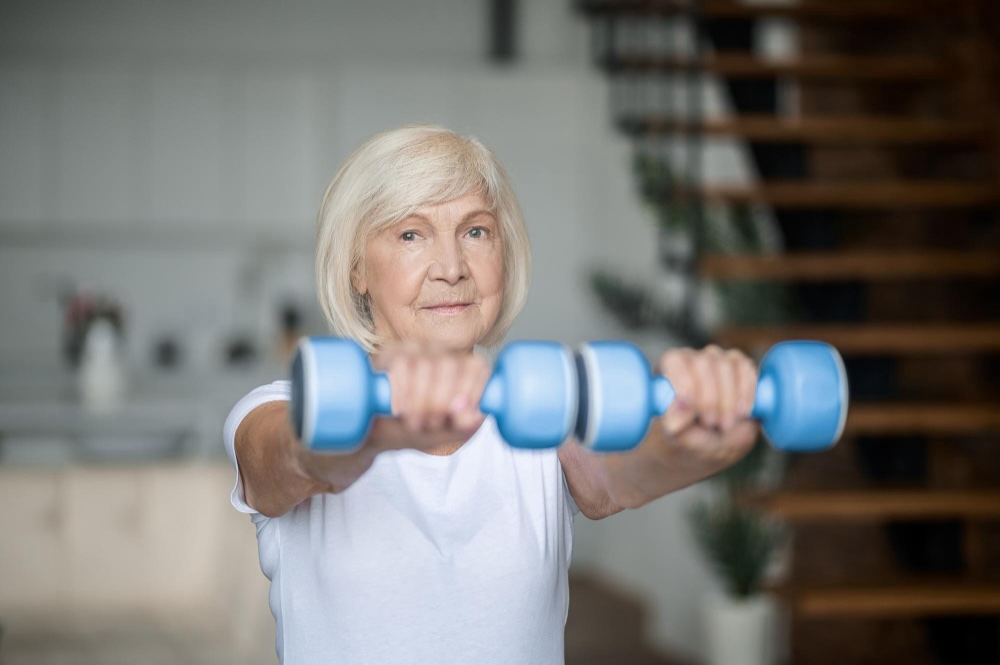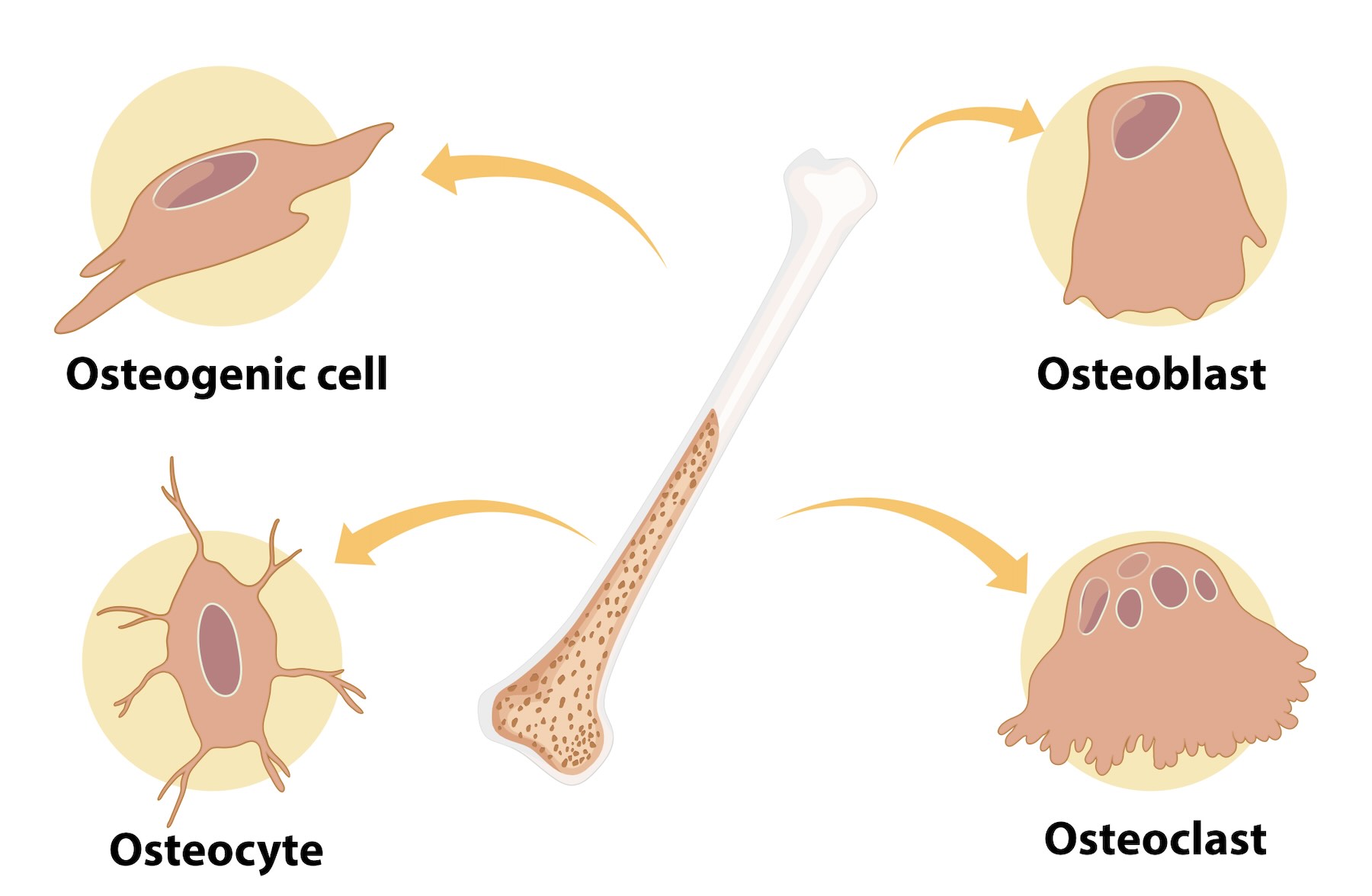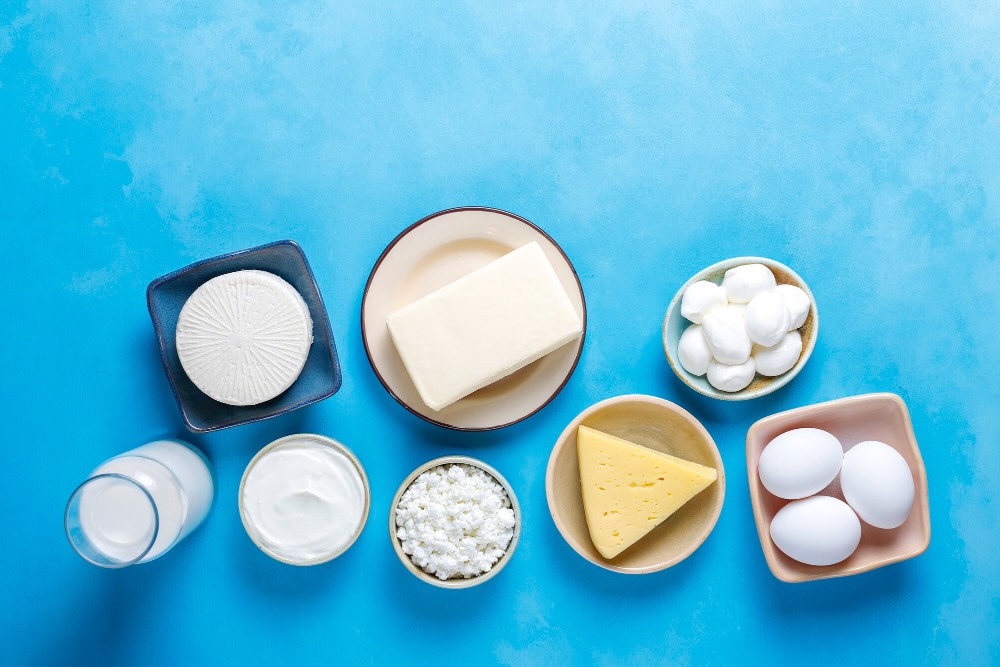Powerful Bone Formulas

- Formula for the bones
- Contains, among other things, good doses of calcium, magnesium, B-vitamins and vitamin D

- Formula for the bones
- Contains vitamin D3, K2, calcium, magnesium, manganese, boron, copper and zinc

- Formula for the bones
- Contains calcium, magnesium, vitamins D3 and K2

- Formula for the bones
- Contains ipriflavone, calcium, magnesium, botanicals and vitamin D3

- Formula for bones and teeth
- Contains calcium, magnesium, silicon and vitamins D and K

- Formula for the bones
- Contains a patented red algae complex with calcium, magnesium and vitamins D and K

- Formula for the bones
- Contains minerals, bamboo extract and vitamins D3 and K2
4 Most Important Supplements for Bones


Vitamin K is a vitamin needed by the body for the production of certain proteins. These proteins are needed for blood clotting and for transporting calcium from the blood vessels to the bones.


Vitamin D is one of the most important vitamins for bones. But the majority of vitamin D products available contain far too little vitamin D. 10 or 20 mcg (400 or 800 IU) per day is a low dosage.


Calcium and magnesium are the two most important minerals for bones, which, compared to other minerals, we need a lot of on a daily basis.


Stinging Nettle capsules have broad effects and are good for joints, among other things.
More formulas for the bones

- Formula for the bones
- Contains calcium, magnesium, vitamins D3 and K2

- Multi for the bones
- A balanced combination of vitamins and minerals

- Formula for the bones
- Contains ipriflavone, calcium, magnesium, botanicals and vitamin D3
Buy the best supplements for bones on this page. Or first read more about vitamins for strong bones below.
Supplements for the Bones
Calcium is one of the most important minerals for our bone structure. A calcium deficiency can lead to a decrease in bone density.
Magnesium also contributes to the maintenance of strong bones and normal bone formation. The ideal ratio between calcium and magnesium intake varies: while some scientific literature supports a 2:1 ratio (twice as much calcium as magnesium), other experts recommend a 1:1 ratio.
Vitamins D and K help with calcium absorption into the bones, and vitamin C supports good bone health.
The Skeleton
We call the set of bones the skeleton: different types of bones that are all connected to a greater or lesser extent by means of supple joints. The skeleton provides protection to the vital organs and gives the body strength. The bones of our skeleton also serve as stores of important minerals, especially calcium, and are important for the production of blood cells. In addition, bones provide mobility for the body. Bones even have functions you wouldn't immediately think of: in the middle ear, bones transmit sound. And perhaps bones even stimulate our memory thanks to the recently discovered hormone osteocalcin.

Humans generally have 206 bones. This number can vary: there are people with a thirteenth pair of ribs, and people with Down syndrome often have a few fewer ribs. A baby's body consists of many more bones, as many as 350! This is because many of the bones have not yet grown together, making the baby very flexible, which is necessary during delivery.
Bones are enormously strong, even stronger than reinforced concrete; yet bones are relatively light. All bones together weigh about 9 kg. You might think that there is not much life in bones, but nothing could be further from the truth. Bone is living tissue that contains blood vessels and all kinds of cells.
Bone tissue
Bones consist of living tissue that contains several types of cells: osteocytes (bone cells), osteoblasts (bone-forming cells), and osteoclasts (bone-resorbing cells). These cells are enveloped by the so-called bone matrix: the extracellular matrix of bone tissue.

In the bones, a continuous process of formation and breakdown of bone tissue takes place. Specialized connective tissue cells handle the breakdown of bone tissue (osteoclasts), which is replaced by new bone tissue thanks to the bone-forming connective tissue cells (osteoblasts). Over time, when the osteoblasts have completed their function, they turn into osteocytes. Osteocytes actually form hardened bone tissue. The most important minerals in the bone matrix are calcium and phosphate. The most important protein is collagen. Collagen contributes to the flexibility of bones, while minerals provide hardness and strength.
In the bone matrix, blood vessels transport nutrients to the cells.
Peak Bone Mass and osteoporosis
Peak Bone Mass (peak bone mass) or PBM says something about bone density. Bone density increases significantly during childhood and peaks when final height is reached. Usually between our 30th and 35th years of life. During this period, osteoblasts are more active compared to osteoclasts. In other words, the bone-forming cells are more active than the bone-degrading cells.
Bone with a high bone density is thus very compact. But bone can become more porous. So porous, in fact, that osteoporosis occurs. Osteoporosis literally means porous bone. There is anemia of bone and this leads to an increased risk of bone fractures.
There may be several causes for this. Acidosis can be a cause, as can a deficiency in proteins, magnesium, vitamins D and K and calcium.

Menopause and osteoporosis
There are conflicting reports about low estrogen levels being one of the major causes of postmenopausal osteoporosis. Remarkably, men have low estrogen levels throughout their lives and do not explicitly suffer from these symptoms.
Also, in children, the greatest bone formation occurs during the period before puberty, when there are low estrogen levels. Another cause of osteoporosis during menopause is vitamin D and K deficiency.
Bone structure
The outside of the bone has a compact structure to resist compressive force. This layer is called substantia compacta. The center of the bone is spongy so as not to make the bone too heavy, we also call it substantia spongiosa. This is where you can find the bone marrow and blood vessels.
The bone is surrounded by a periosteum also called periosteum or periosteum. Nerves and blood vessels run through this and tendons and ligaments can be attached to it. Such as knee ligaments and cruciate ligaments.
To indicate which part of the bone we are talking about, we distinguished the following parts: the end of the bone we call the epiphysis. This area provides the cartilage with its nourishment. The diaphysis is the middle part of the bone where new blood cells are formed, and water is also stored here.
The metaphysis is the transition from the diaphysis to the epiphysis. From the metaphysis the growth of the bone takes place.

Types of bones
According to their shape, you can divide bones into 4 groups:
- Pipe bones, these are pipe-shaped, slender bones with a fairly thin middle portion. An example of and pipe bone is a radius bone and tibia.
- Flat bones, these are often quite large in length and width. An example of this is the shoulder blades and skull bones.
- Short bones, also called sesamoid bones: small bones scattered in tendons and ligaments. They are found predominantly in our hands and feet.
- Uniform bones, these have different shapes and functions. For example, upper and lower jaws and the vertebrae.
Osteocalcin
Osteocalcin plays an important role in maintaining bone mass. Necessary for the production of osteocalcin is menaquinon and calcitriol, which is the active form of cholecalciferol (vitamin D) that is essential for the absorption of calcium and the maintenance of healthy bones. Osteocalcin is widely considered a marker of bone formation.
Osteocalcin (OC) is a calcium-binding peptide of 49 amino acids produced by osteoblasts. Besides collagen, it is the most abundant protein found in bone. Most of the osteocalcin secreted by osteoblasts will be used for bone production. However, a small portion is secreted into the bloodstream.
In the bloodstream, both carboxylated and non-carboxylated forms of osteocalcin are present. Carboxylation means adding a COOH group, or carboxyl group. This gives these proteins strong calcium-binding properties. Vitamin K is a cofactor for carboxylation of bone proteins, including osteocalcin. Non-carboxylated osteocalcin has a lower affinity for calcium binding.
No organ or system stands alone, which means that all systems affect each other. This wonderful physiological principle also applies to the role played by bones in the body. There is evidence that osteocalcin not only appears to be involved in bone formation but also appears to be promising in other processes in the body. For example, osteocalcin is increasingly recognized for its endocrine function (the secretion of hormones). Which in turn affects elsewhere in the body, such as in brain development, cognitive function and on blood glucose metabolism.
The production of osteocalcin can be increased by exerting force on our bones, in other words, by moving.
Written by: Liesbeth Thoen
Reviewed by: Marcella van der Wel
Updated: 17 October 2023
